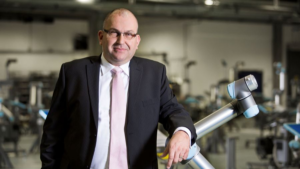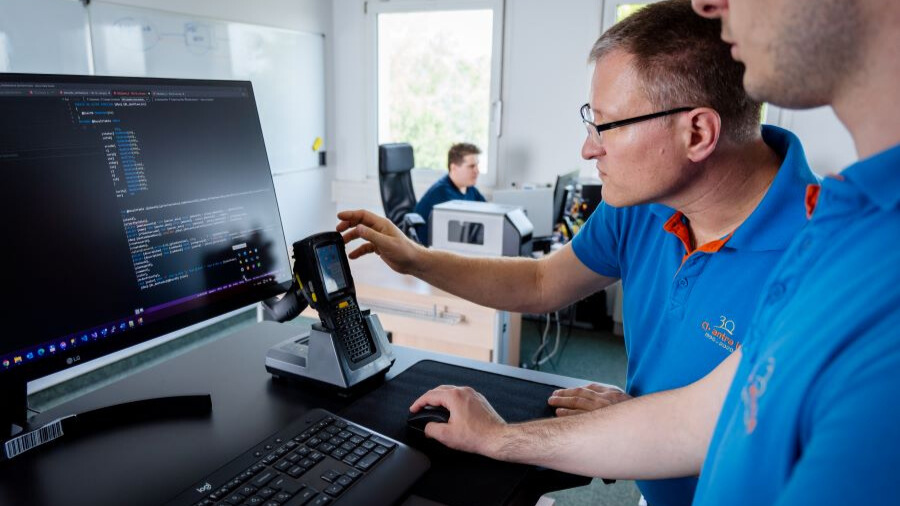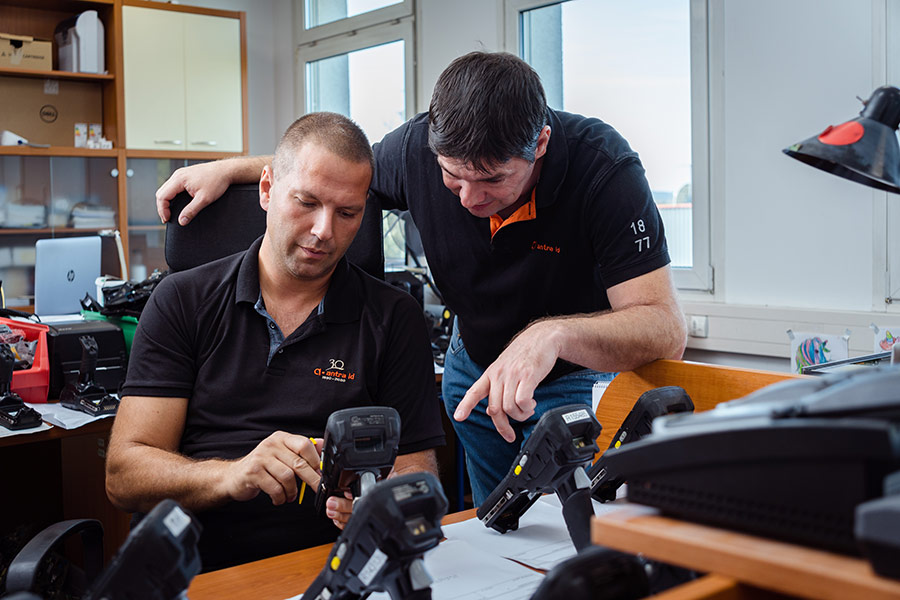Technology, in the figurative sense, has never known boundaries. With the establishment of Central European Automation Holding (CEAH), an organization was created to strengthen international cooperation. The combined international experience and knowledge of the member companies in the field of automation are now also available to Hungarian customers. We spoke with Slavoj Musílek, a member of the Board of Directors of the CEAH Group, and Róbert Haraszti, Business Development Manager of Auware Engineering Kft., about the trends in automation in Central Europe and the goals of CEAH. And Antra ID Kft.
Are there region-specific advantages and disadvantages in Central Europe that make it difficult or more accessible for clusters of industrial automation companies to work together?
Slavoj Musílek: Every country is a bit different, but the purpose, functioning, and benefits of automation are the same everywhere, primarily serving the exact needs and solving the same problems. The industry and society are changing; it is becoming increasingly difficult to find experts for monotonous and exhausting work, while at the same time, cost pressures are increasing, deadlines are getting shorter, and quality requirements are getting stricter. The global pandemic and the associated experience of supply chain vulnerability are added. These challenges are being experienced simultaneously in all countries in the region. At the same time, however, automation systems have reached a level where they are technologically and affordably accessible to even the smallest businesses.
The regional level of automation is lower than in Western Europe, but there are no significant differences within the area itself. Looking more closely at the V4 countries, the differences in automation are mainly due to different industrial structures. Where the automotive industry has traditionally dominated, the level of automation will also be higher, as this sector has always been an early adopter of new technologies. The Czech Republic and Slovakia are thus slightly ahead of Hungary and Poland.
Róbert Haraszti: In Western Europe, labor costs are much higher, so the payback period for an automation investment can be much shorter. This kind of change started years ago in our country with a sharp wage increase. Still, automation processes have only penetrated the level of small and medium-sized enterprises in the region to a limited extent. This is a significant difference from Western Europe, where micro and small enterprises are also being automated, contributing significantly to the regional productivity gap. In Hungary, smaller firms do not yet consider automation in such a natural way; tradition is often a higher priority than innovation. This also sets the path: if regional firms want to remain competitive, they should follow the automation path. After all, despite all the protectionist rhetoric, competition is global.

Electromobility will come to the fore in the automotive industry, and the Central European supply chain will adapt. Is this a challenge or an opportunity for CEAH?
Róbert Haraszti: It‘s an opportunity. Cost-effective battery technology can only be produced with high economies of scale, which requires a high degree of automation. Production lines must also be flexible; advanced identification technology and material tracking are required to monitor individual requirements. And now, the incoming large automotive companies are also not planning to stay within national boundaries but will seek regional cooperation. This operating model will also impact their suppliers so that regional automation holding will be highly competitive in the emerging market. But we also need to be prepared for the challenges: adapting our flexible manufacturing solutions as much as possible to the methods required for battery and electric vehicle production.
Slavoj Musílek: The problem for car manufacturers is not the design and production of electric cars but the restructuring of the entire supply chain. Most of the suppliers that produce mass-produced items, such as mechanical components for traditional car production, will no longer be needed, so that car manufacturers will need many sensors, software products, etc. This is a massive opportunity for all players in this sector to participate in the changes, but they must also prepare for it.
Is the EU support program a valuable tool for reducing disparities?
Slavoj Musílek: This question should be divided into two parts. Multinational companies use subsidies very effectively to develop their competitiveness or sustainability technologies. However, small and medium-sized enterprises use only a few grant resources for investments in automation. This may be due to several reasons, such as too diverse a product range or concerns about the complexity of the devices and the lack of in-house Staff skills for such a technological leap. The complicated grant system does not help SMEs.
Róbert Haraszti: All grant programs look good on paper, but by the time SMEs pay the person who writes the grant application, the agency that prepares the reports and documentation for the application (administration can take a surprisingly large amount of money), implements the project and pays the co-payment, it often turns out that the financial outcome is not actually that great. Not to mention that top-down investment decisions always distort the market and can divert attention to purchases that are not the most advantageous for the business.
However, well-chosen grant sources are beneficial as they play a crucial role in the relatively rapid recapitalization of SMEs in the region, and grants received by multinationals can partially trickle down to the level of their suppliers, again creating a market for SMEs. The grant resource can also help develop a new technology or product. A good guideline is not to look for a place for the grant within the company but to choose a grant that fits the company’s vision.
Slavoj Musílek: It would be more beneficial to have a grant system supporting real technological leaps rather than buying one forklift or machine tool after another.
How is the role of data in manufacturing changing?
Slavoj Musílek: The collection and use of data will indeed be one of the future critical factors of the automation industry. We will not be interested in robot cycle time, but all relevant data will be comprehensively evaluated so that we can make informed decisions to improve efficiency continuously. Artificial intelligence will also help us do this, and we cannot neglect areas that are not directly related to the production of the product but still contribute to the overall efficiency of the business, such as logistics or facilities management.
 Where is Central European Automation Holding heading? What are the untapped areas in automation?
Where is Central European Automation Holding heading? What are the untapped areas in automation?
Slavoj Musílek: Most of our projects are related to the automotive industry, but we also have a comprehensive offer for the food, pharmaceutical, plastics, and other sectors with a particular focus on intralogistics processes. We intend to expand our portfolio with additional acquisitions further. We are in advanced discussions with companies in the region that are prospective for us, and we can expect to announce the addition of new member companies to Central European Automation Holding later this year. Our main target markets are Hungary, the Czech Republic, and Slovakia. We are also interested in Poland and the Balkan region, and our next ambition is to expand our presence in Germany.
Róbert Haraszti: The more diverse our activities are, the more our clients can get from us. With only three member companies, we already have several projects where we deliver complex turnkey solutions using synergies, and all the know-how comes from CEAH member companies. This ensures the high availability of the automation system. However, knowing the country, sector, and environment is equally important in addition to technology and knowledge. The holding company wants employees who live in the country and speak the customer’s language – literally and figuratively. The system works, as evidenced by customer feedback, so the goal is to expand and grow. The key is a global presence while maintaining proximity and direct contact with customers.
Is improving synergies between the holding companies also on the agenda?
Slavoj Musílek: There is always room for improvement in this field. We consider improving cooperation to be a strategic area, and we want to be a consistent group, which means that what we improve and implement in one company, we will not leave out in others.
Róbert Haraszti: When improving synergy, we have to take into account the dual identity of the employees, who, on the one hand, are naturally tied to their employer, but on the other hand, see themselves as part of a larger organization, Central European Automation Holding. This development is taking place rapidly, and it is also working at a higher level – think of the citizens of the European Union who also belong to their nation.
With such an international background, the two Hungarian companies currently employ 20-25 people, are poised for tremendous growth, and are virtually destined for success. The precise aim of CEAH is to break down borders – both figuratively and geographically, because countries in the region can only succeed if national borders do not constrain their business.
Slavoj Musílek, CEO Central European Automation Holding
Róbert Haraszti, Business Development Manager Antra ID Kft. & Auware Engineering Kft.
Techmonitor, Lászlo Molnár



